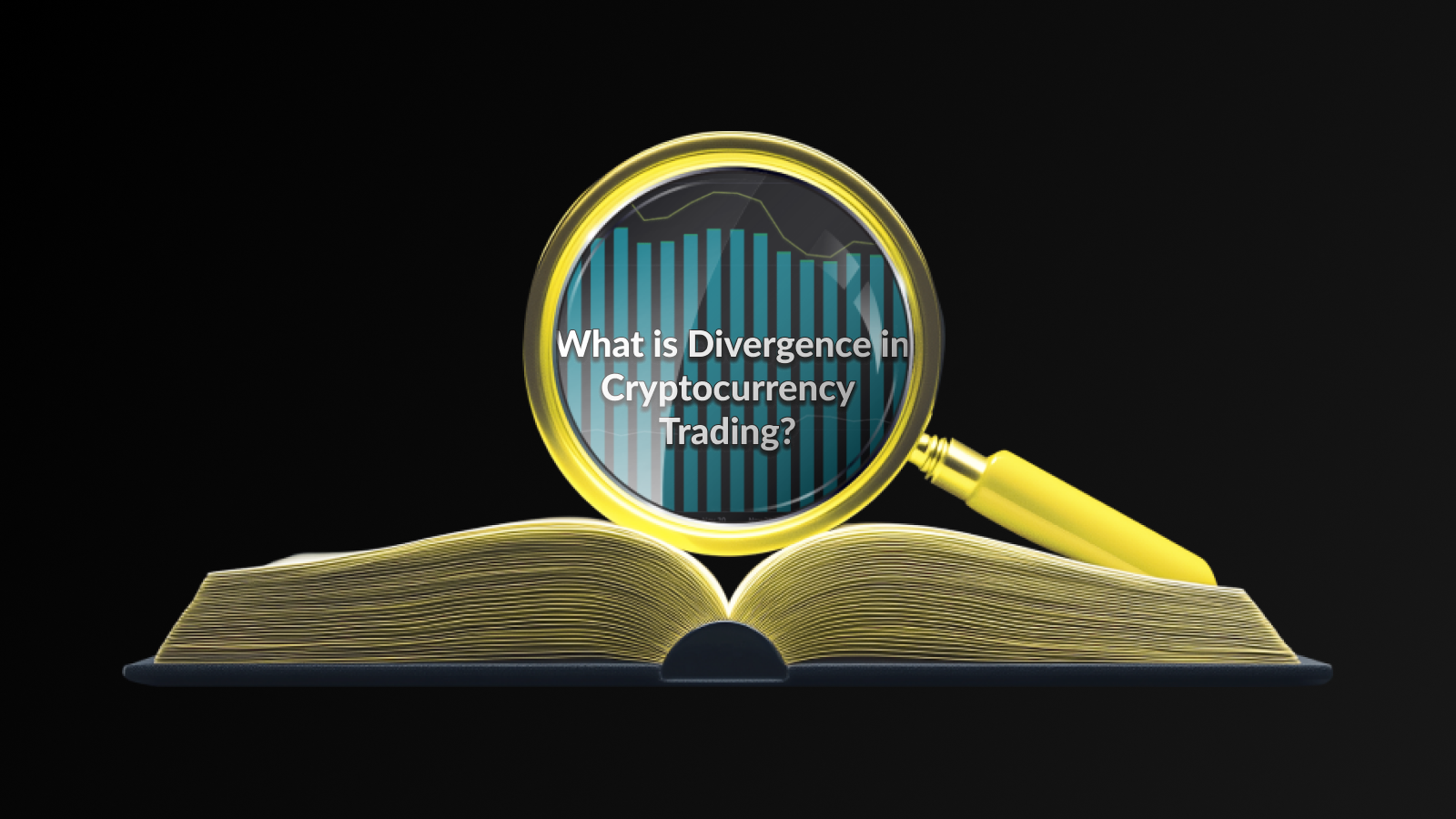Introduction
Divergence in Cryptocurrency Trading is a crucial concept that traders should understand to make informed decisions in a volatile market. It occurs when the price of a cryptocurrency moves in the opposite direction of a technical indicator, such as the Relative Strength Index (RSI) or Moving Average Convergence Divergence (MACD). This discrepancy often signals potential reversals or trend continuations, making it imperative for traders to recognize.
By identifying divergence, traders can better assess market conditions and predict possible future price movements. For instance, a bullish divergence might suggest that while the price is dropping, the indicator shows bullish momentum, hinting at a possible price increase ahead. Conversely, a bearish divergence might indicate that while prices are climbing, underlying market strength is waning, suggesting a potential downturn.
Understanding divergence not only aids in recognizing trends but also enhances a trader’s ability to develop effective trading strategies. This knowledge serves as a tool to navigate the complexities of the cryptocurrency market, where emotional trading can lead to costly mistakes.
In essence, incorporating insights gained from observing divergence trends into your trading strategy can help to mitigate risks and capitalize on profitable opportunities. By staying aware of these signals, traders can position themselves more strategically in the dynamic landscape of cryptocurrency trading.
How Does Divergence Work in Crypto Trading?
Divergence in Cryptocurrency Trading refers to the incongruence between the price action of a cryptocurrency and the corresponding signals from indicators often used in trading. This phenomenon can signal potential reversals in the market and is a crucial aspect of technical analysis.
When traders analyze divergence, they typically observe two aspects: the price of the cryptocurrency and the value of an indicator, such as the Relative Strength Index (RSI) or Moving Averages. Let’s explore how divergence manifests in crypto trading:
Identification of Divergence
To identify divergence, traders often compare the highs and lows of the price chart against the highs and lows of the chosen indicator. If the price makes a higher high while the indicator makes a lower high, this indicates bearish divergence, suggesting a possible price decline. Conversely, if the price creates a lower low while the indicator forms a higher low, it indicates bullish divergence, suggesting a potential price increase.
Types of Divergence Signals
There are primarily two types of divergence signals in crypto trading:
- Regular Divergence: This occurs at the extremes of market trends and is often perceived as a warning of a potential trend reversal.
- Hidden Divergence: This signals a potential continuation of the current trend and often appears during pullbacks or retracements.
Successfully leveraging Divergence in Cryptocurrency Trading allows traders to enhance their market predictions and refine their entry and exit strategies. However, it’s essential to combine this tactic with other analytical tools to minimize risk and improve decision-making accuracy.
Types of Divergence
Divergence in cryptocurrency trading can be categorized into two primary types: regular divergence and hidden divergence. Each type provides unique insights into market trends and potential reversals.
Regular divergence occurs when the price movement of a cryptocurrency diverges from an indicator such as the Relative Strength Index (RSI) or moving averages. This often signals a potential reversal in the current trend. For instance, if the price of a cryptocurrency makes a new high while the RSI makes a lower high, this indicates a weakening bullish momentum and could suggest that a downward price movement is imminent.
On the other hand, hidden divergence typically occurs in continuation patterns. It happens when the price makes a new low, but the indicator shows a higher low. This signals strength in the prevailing trend, suggesting that the upward momentum may continue despite temporary pullbacks.
Understanding these types of divergence is crucial for traders as they formulate their strategies. The correct identification of divergence in cryptocurrency trading can provide significant entry and exit points, maximizing the potential for profit while minimizing risk.
How to Use Divergence in Crypto Trading Strategies
Utilizing Divergence in Cryptocurrency Trading can enhance your trading strategies and improve your decision-making process. Here are some methods to effectively integrate divergence into your trading practices:
1. Confirming Trend Reversals
Traders often use divergence to identify potential trend reversals. When the price is making new highs or lows, but the corresponding oscillator fails to do the same, it signals a weakening trend. Look for a divergence pattern to make informed decisions about entering or exiting trades.
2. Combining with Other Technical Indicators
To increase the effectiveness of divergence signals, consider combining them with other technical indicators such as Moving Averages or Volume Indicators. This multi-faceted approach can provide a more robust analysis of market conditions and help confirm signals before making trades.
3. Setting Entry and Exit Points
Divergence can also help you define entry and exit points in your trades. For example, when you notice a bullish divergence forming on the chart, it may indicate a good opportunity to enter a long position. Conversely, a bearish divergence might suggest it’s time to take profits or a signal to short.
4. Risk Management
Incorporating divergence into your risk management strategy is essential. Use stop-loss orders to protect your capital in case the market moves against your position. Understanding how divergence can lead you to potential turning points allows you to make better decisions about where to set your stop-loss and take-profit levels.
5. Practice and Patience
As with any trading strategy, patience is vital. Take the time to practice identifying divergence on historical charts before implementing it in live trades. This will help you develop a better eye for spotting divergence and improve your overall trading skills.
The effective application of Divergence in Cryptocurrency Trading can lead to improved trading outcomes when used with care and consideration. By confirming trends, coupling with other indicators, and maintaining disciplined risk management, traders can take advantage of the strategic insights that divergence provides.
Challenges and Limitations of Using Divergence
While Divergence in Cryptocurrency Trading can provide traders with valuable insights, it is not without its challenges and limitations. One of the primary issues is the potential for false signals. Divergence occurs when the price of a cryptocurrency moves in the opposite direction of its technical indicators. However, these signals can sometimes mislead traders resulting in premature entry or exit from a trade.
Another challenge is the varying effectiveness of divergence across different time frames. Shorter time frames can exhibit more noise and volatility, leading to unreliable divergence signals. This inconsistency can make it difficult for traders to establish a dependable strategy, particularly for those who favor day trading or scalping.
Moreover, relying solely on divergence signals may lead to an incomplete analysis. Successful trading often requires a comprehensive approach that incorporates multiple indicators and analysis techniques. Relying exclusively on divergence may overlook essential market dynamics and price action.
The cryptocurrency market is known for its high volatility, which can amplify risks associated with divergence. Sudden price movements can invalidate divergence signals shortly after they occur, leaving traders reacting rather than strategizing effectively. Therefore, it is crucial for traders to combine divergence techniques with sound risk management practices.
Frequently Asked Questions
What is divergence in the context of cryptocurrency trading?
Divergence in cryptocurrency trading refers to the discrepancy between the price movement of a cryptocurrency and its corresponding technical indicator, such as the Relative Strength Index (RSI) or Moving Average Convergence Divergence (MACD). This often signals potential trend reversals.
How can traders identify divergence?
Traders can identify divergence by comparing the peaks and troughs of the price chart with those of an indicator. Bullish divergence occurs when prices create lower lows while the indicator forms higher lows, suggesting potential upward momentum.
What are the two main types of divergence?
The two main types of divergence are regular divergence and hidden divergence. Regular divergence signals potential reversals, while hidden divergence indicates the continuation of an existing trend.
Why is divergence important for trading strategies?
Divergence is important because it provides traders with insights into possible price reversals or continuations, allowing them to make more informed decisions about entry and exit points in the market.
Can divergence be used in conjunction with other indicators?
Yes, divergence is often used alongside other technical indicators and analysis methods to strengthen trading signals and improve the overall effectiveness of a trading strategy.
What are some common pitfalls when interpreting divergence?
Common pitfalls include misinterpreting divergence as a definitive signal when it can fail, and relying solely on it without considering other market factors or indicators.
Is divergence applicable only to cryptocurrency trading?
No, divergence is a concept that can be applied to various asset classes, including stocks, forex, and commodities. It is a widely used tool in technical analysis across different markets.
Disclaimer
This article is for informational purposes only and does not constitute financial, investment, or legal advice. Cryptocurrency trading involves high risks, including market volatility and potential losses. Always conduct your own research and consult with a licensed professional before making trading decisions. Darkex does not guarantee the accuracy or reliability of third-party information referenced in this article.
Click for more Darkex educational articles.



